Adventures in America: That time we got mugged
One of the things they warn you about when travelling is being mugged, so I knew it was a possibility in a large city like Boston. But I never expected it on the high seas.
Still, there it was. Sometimes you’ve just got to make the best of the situation in front of you.
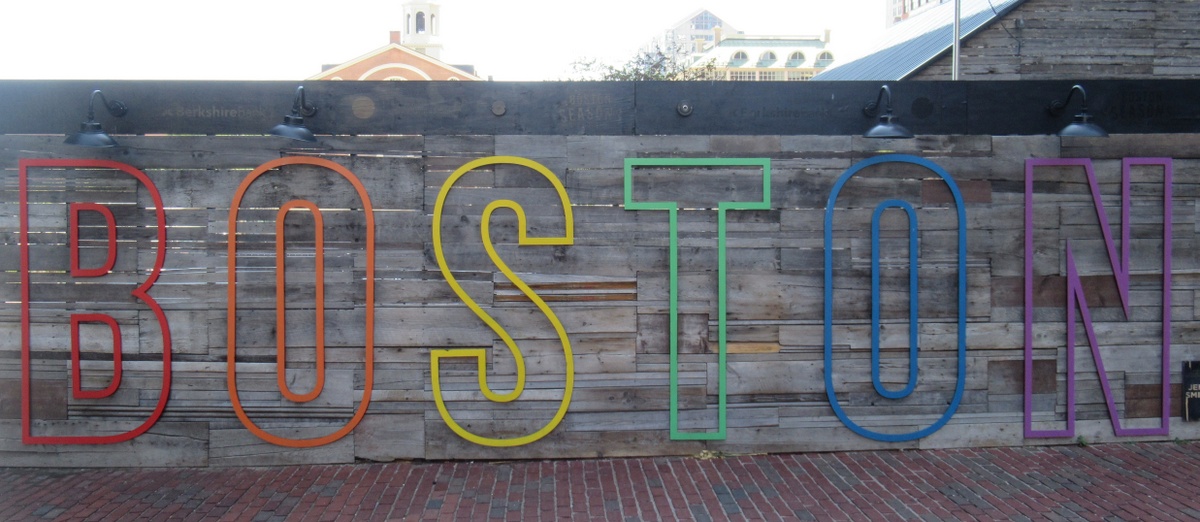
While I’d long thought of visiting Boston if I was on the US East Coast, I didn’t think I’d make it last year. But there was a specific concert I wanted to see, so I ended up getting there on fairly short notice - and that meant reading many lists of “Top things to do in Boston”.
Mostly they focused on Boston’s history, which is fair enough. Yes, I guess I should have known how much it was involved in Revolutionary History in particular, but it hadn’t quite sunk in. None of those lists mentioned whale watching 🐳, though.
So it wasn’t till I’d actually arrived in Boston and was walking the streets that I saw a few billboards advertising whale watching. Honestly, at first I thought it was a joke, but it was worth at least looking up. It turned out the Stellwagen Bank National Marine Sanctuary was off-shore and supposed to be a good place for whales.
That was another activity booked: A tea party one day, whale watching the next, and dragons the day after. That’s just how we roll.
The cruise
Getting there, the ticket office makes it quite clear what their starring attraction is:
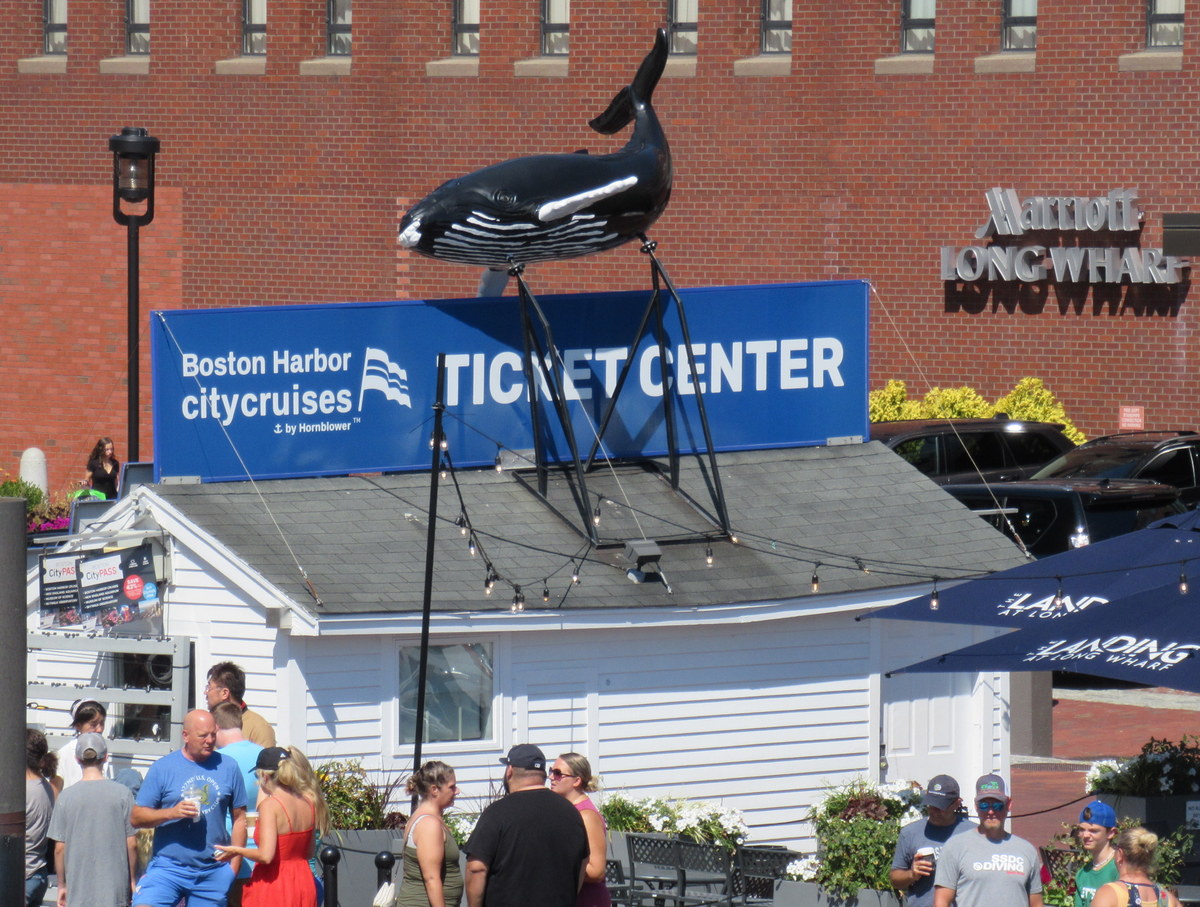
We boarded. Then we set out, leaving the city skyline behind us:
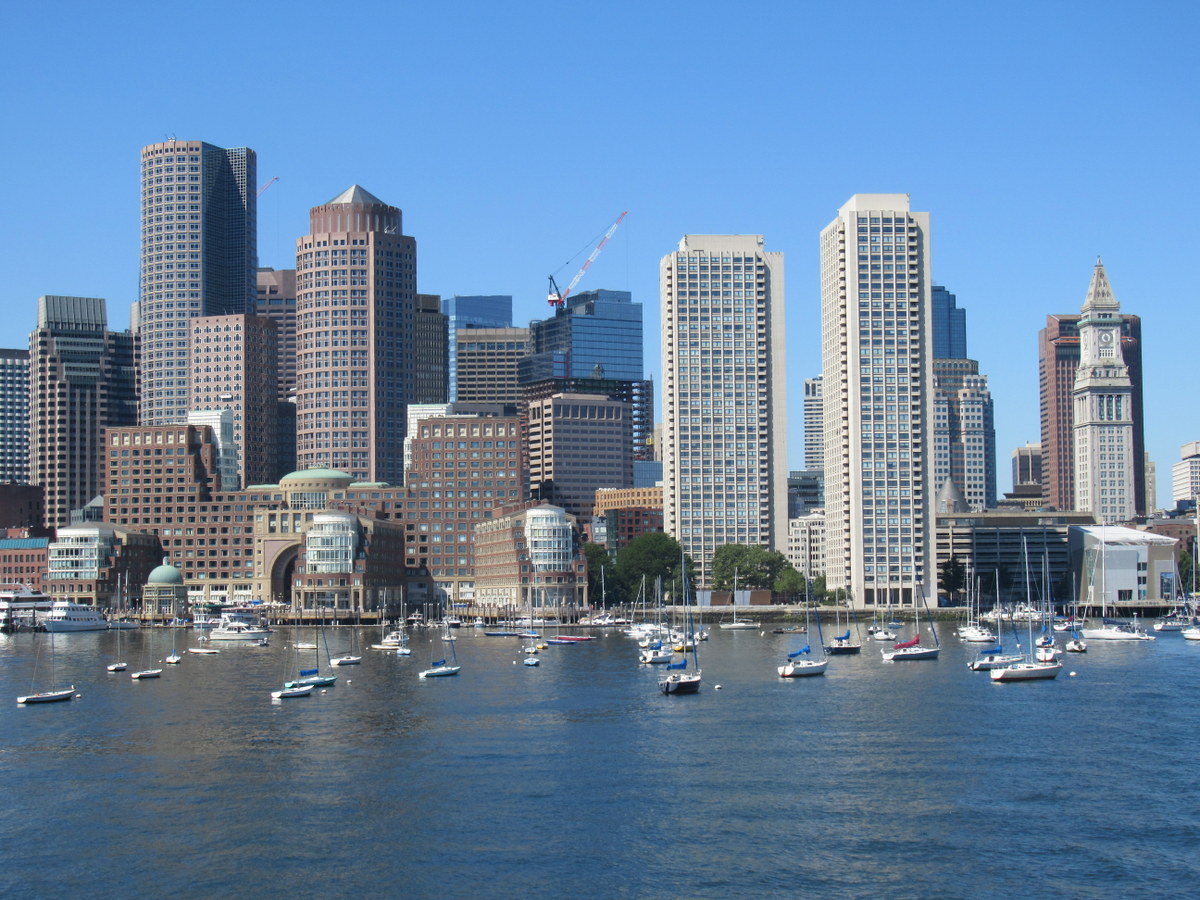
And waving the flag proudly as we left a wake behind:
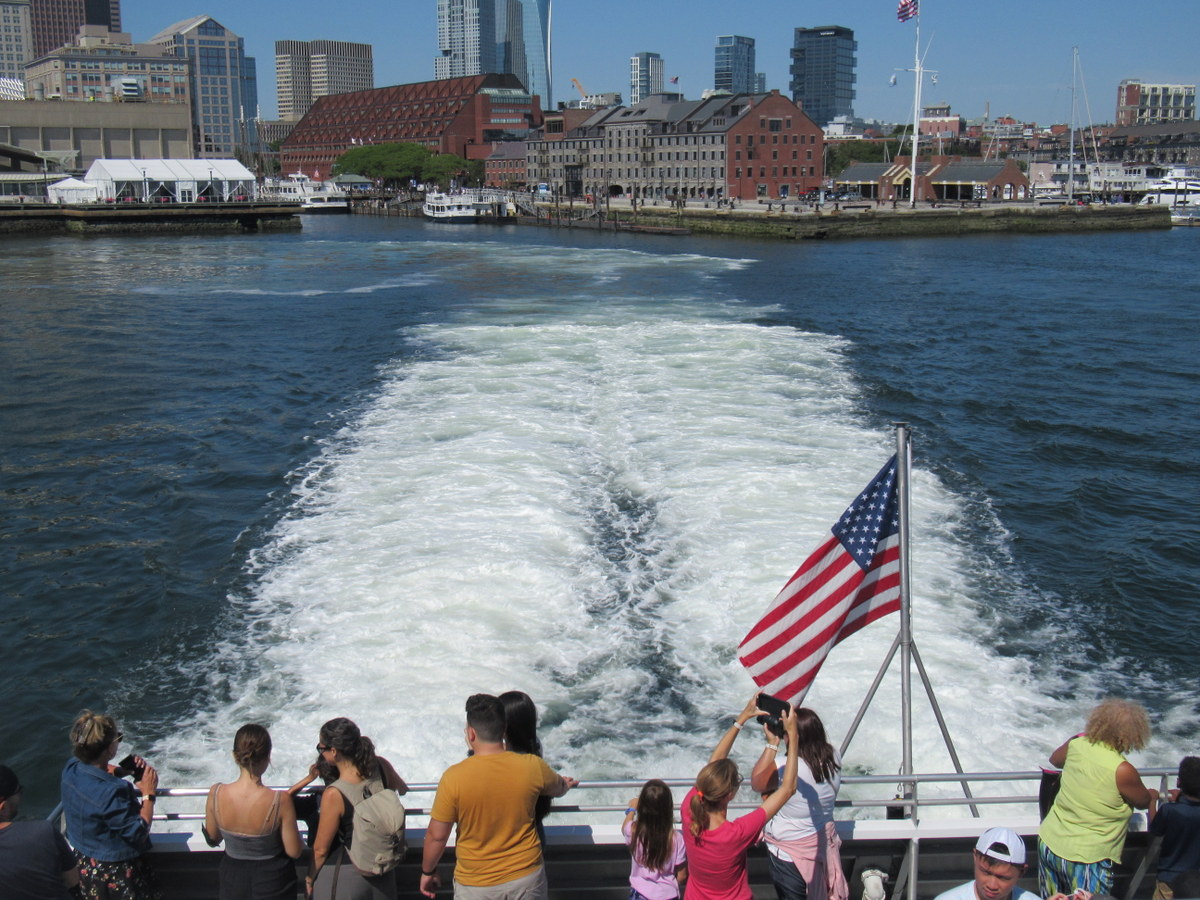
To give a feel for what kind of boat it was, here’s one of the sister ships that we passed:
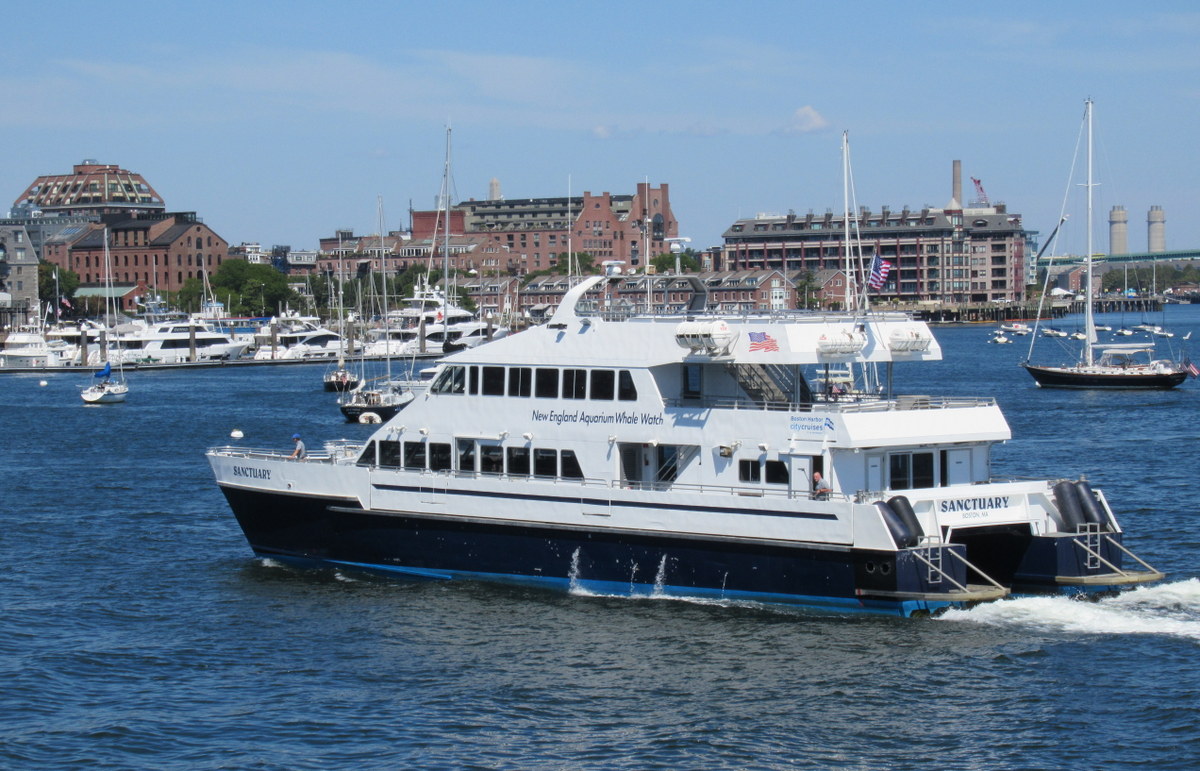
We passed the airport and saw the planes coming in:
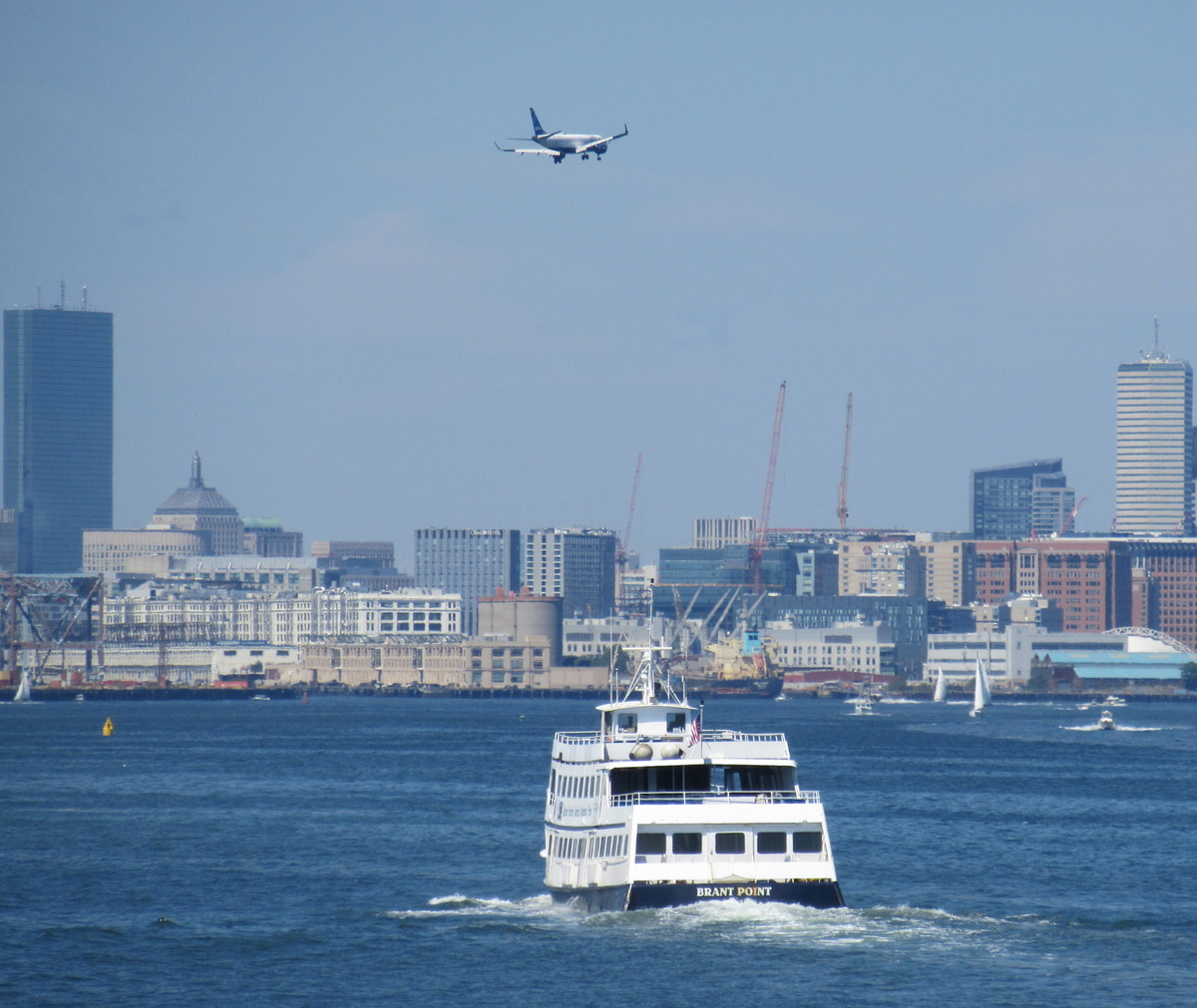
We went past the Boston Harbor Islands:
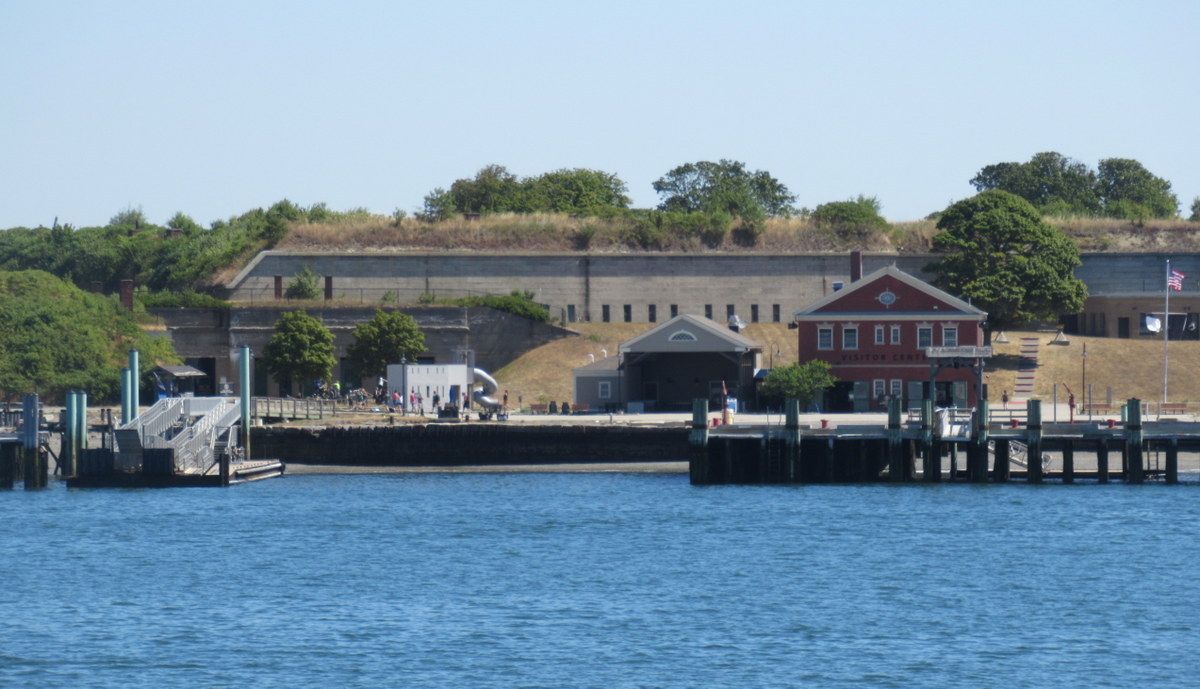
Saw the Boston Light (apparently on the site of the first lighthouse in the US):
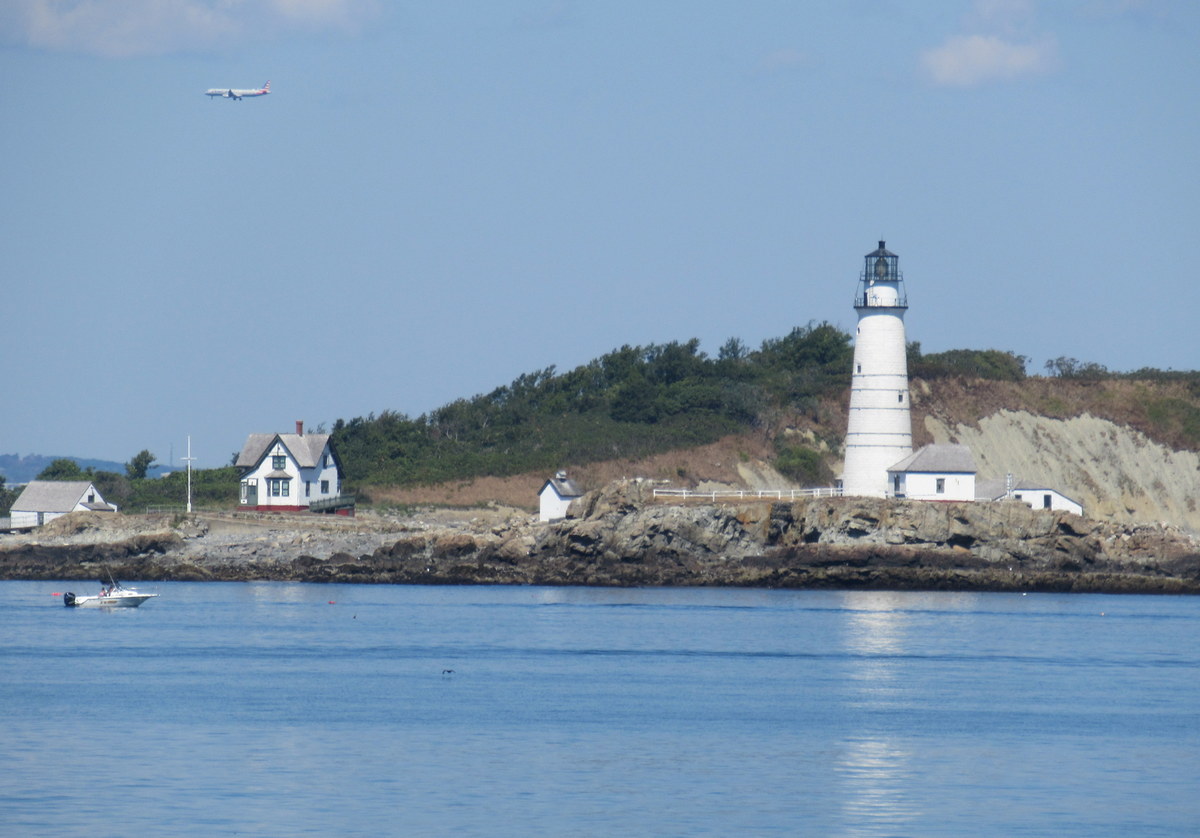
Admired the sailing boats:
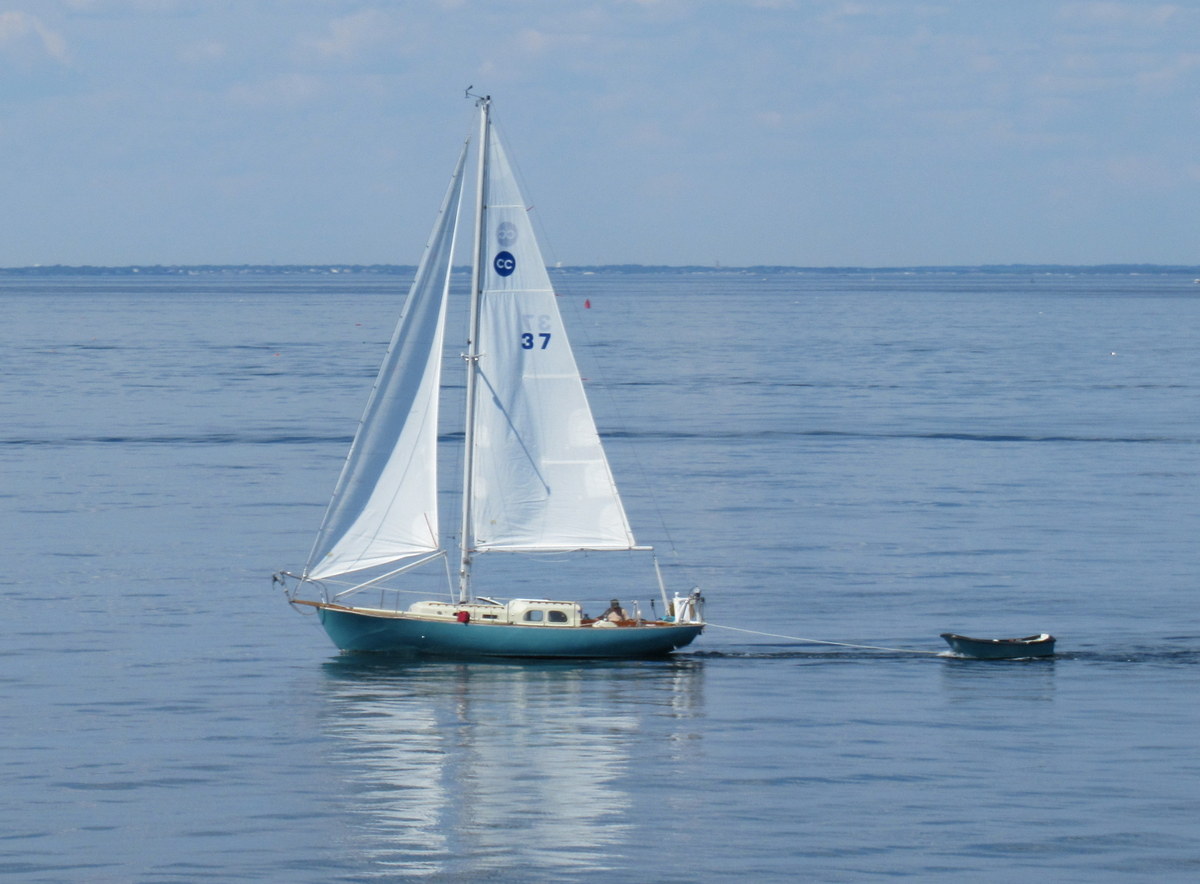
Watched random small birds floating in the ocean unconcernedly:
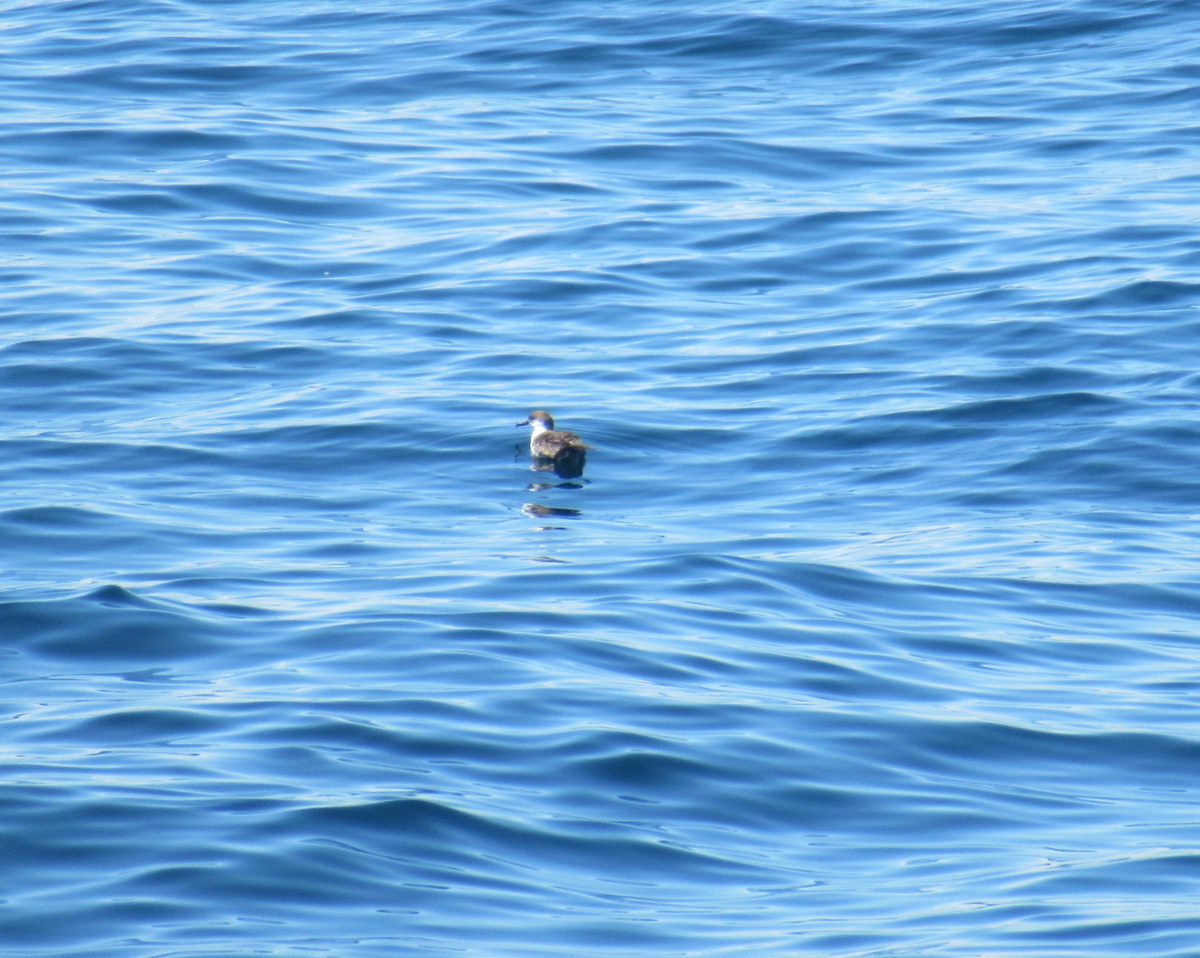
Finally, there we were, out on Stellwagen Bank. There was water stretching to the horizon in all directions.
But what about this mugging?
OK, I hear you: When’s the mugging coming? I promised a mugging, and so far it’s just been a fairly routine cruise. Nice pictures (well, I think so, anyway), but not perhaps exciting enough. Get to the important questions: Was there piracy on the high seas? How much did you lose? Did anyone die?
Trust me, I’m getting to the mugging - but first we really need to find the whales. We searched, and sure enough, soon there was a tail in the offing:
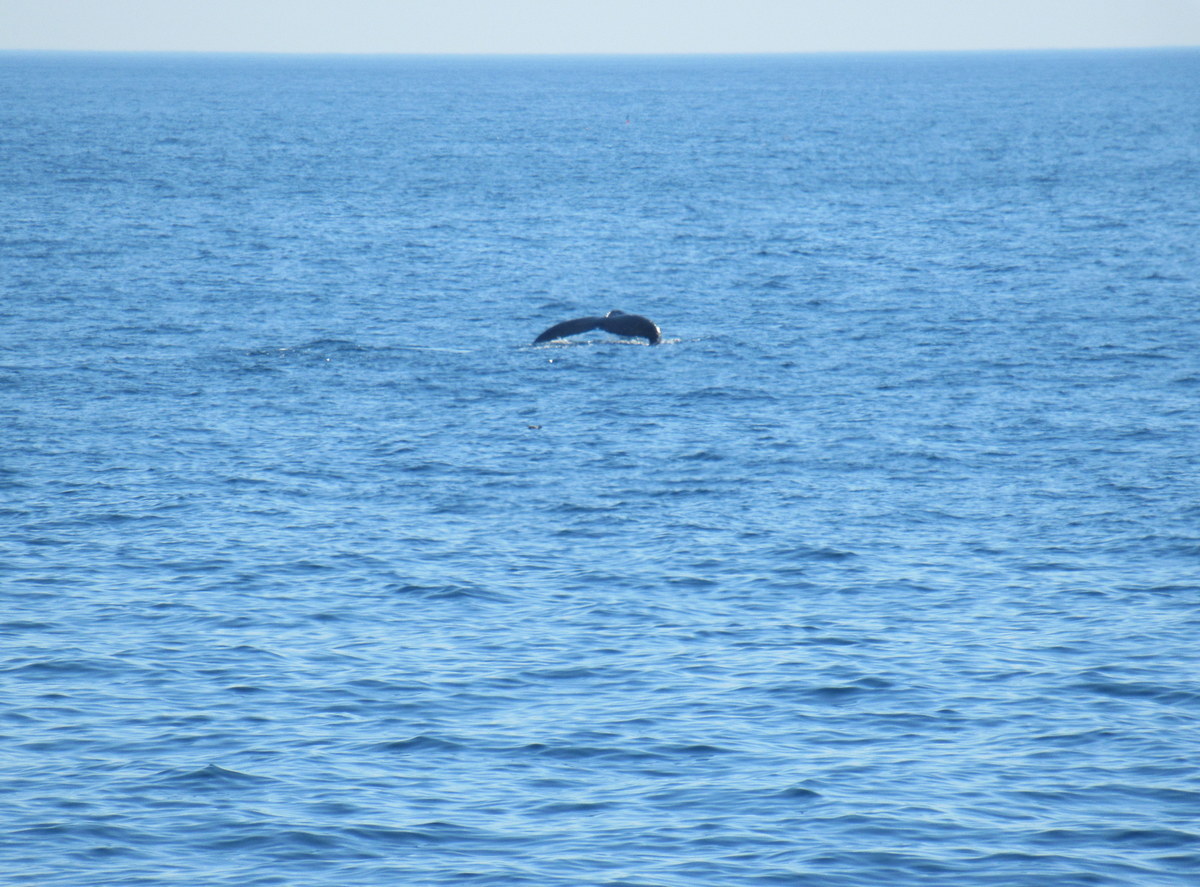
We got closer, and it turned out to be two humpback whales - mother and calf. The calf was playful - changing directions, surfacing frequently, and checking out both sides of the boat. The mother didn’t surface as often, but the water was clear and we could see her below the calf. And when she did surface - we definitely noticed her…
It wasn’t till we’d been watching the pair for a while that the naturalist on board told us we’d been mugged. Apparently this is the technical term for “When whales stay so close that the boat can’t safely move on, so we’re reluctantly forced to stick round and watch them” (the best kind of mugging, I’m sure).
A mugging - in pictures
I think the best thing is for me to share a couple of sequences of photos. I think they’re both of the calf, and each photo is a couple of seconds after the previous one. And they really did have to be close to the boat for me to get sequences like this.
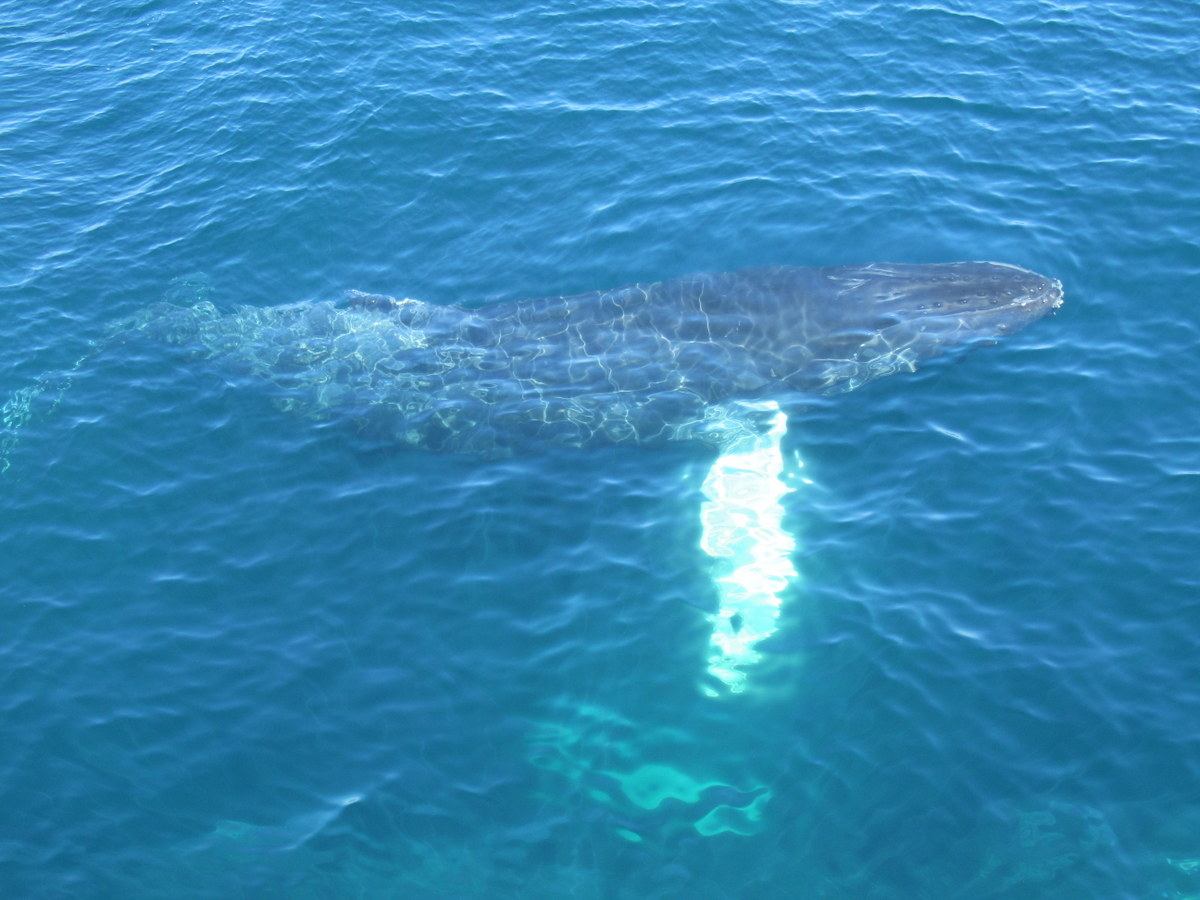
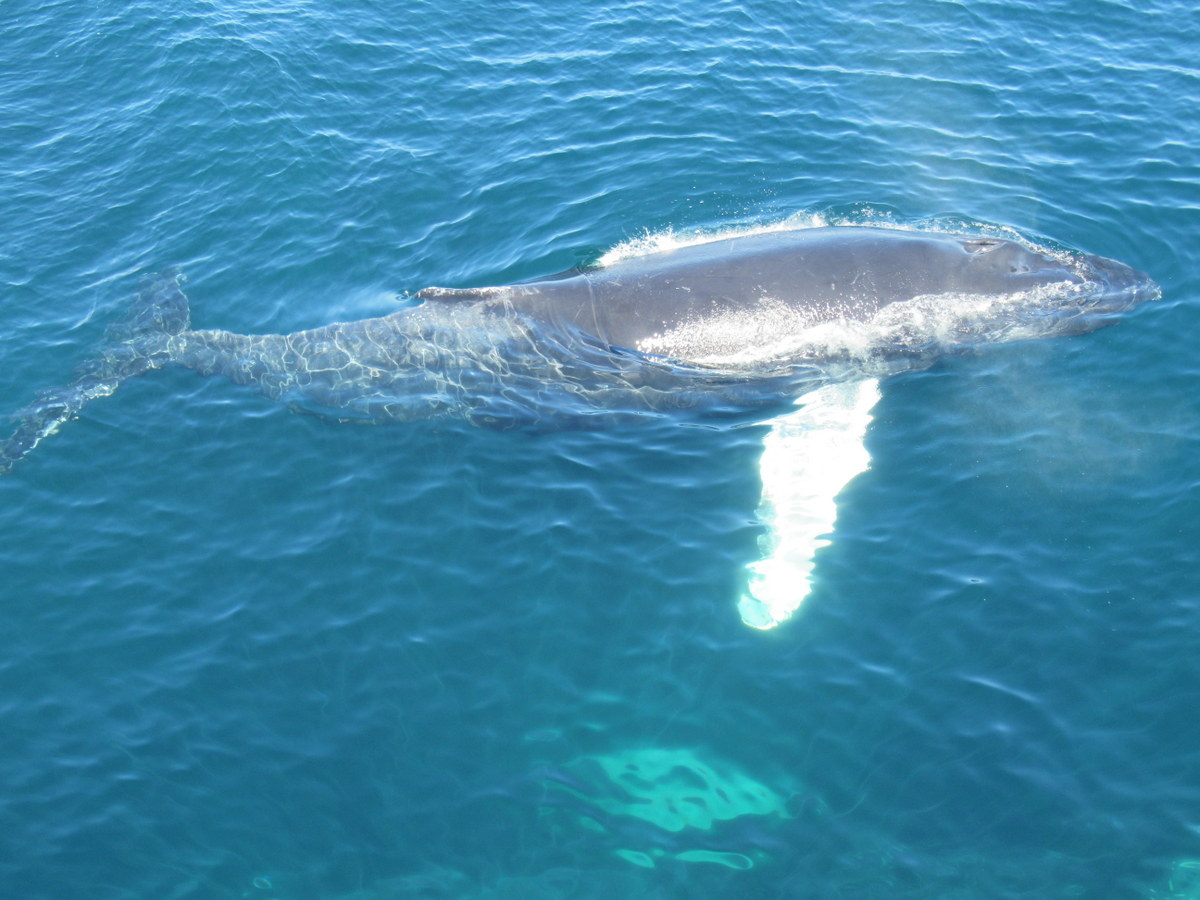
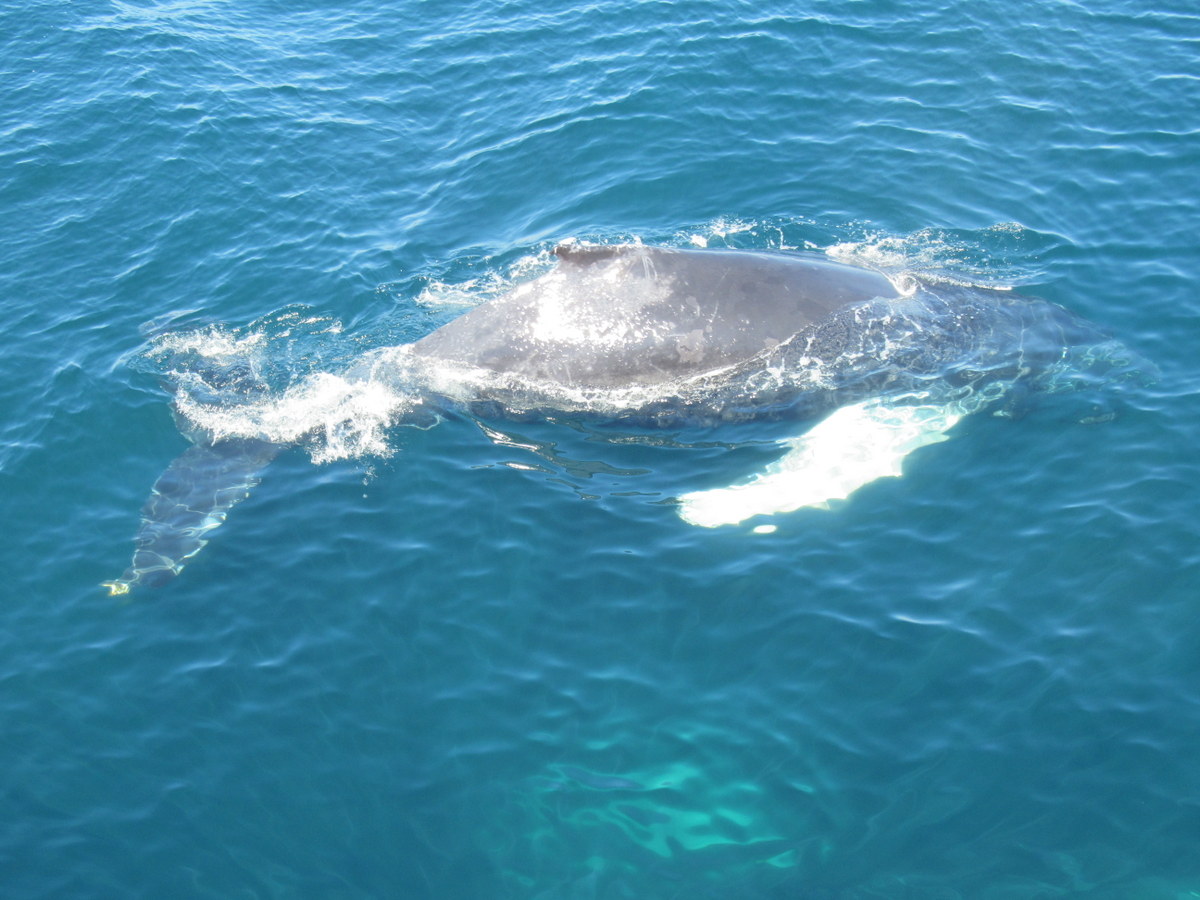
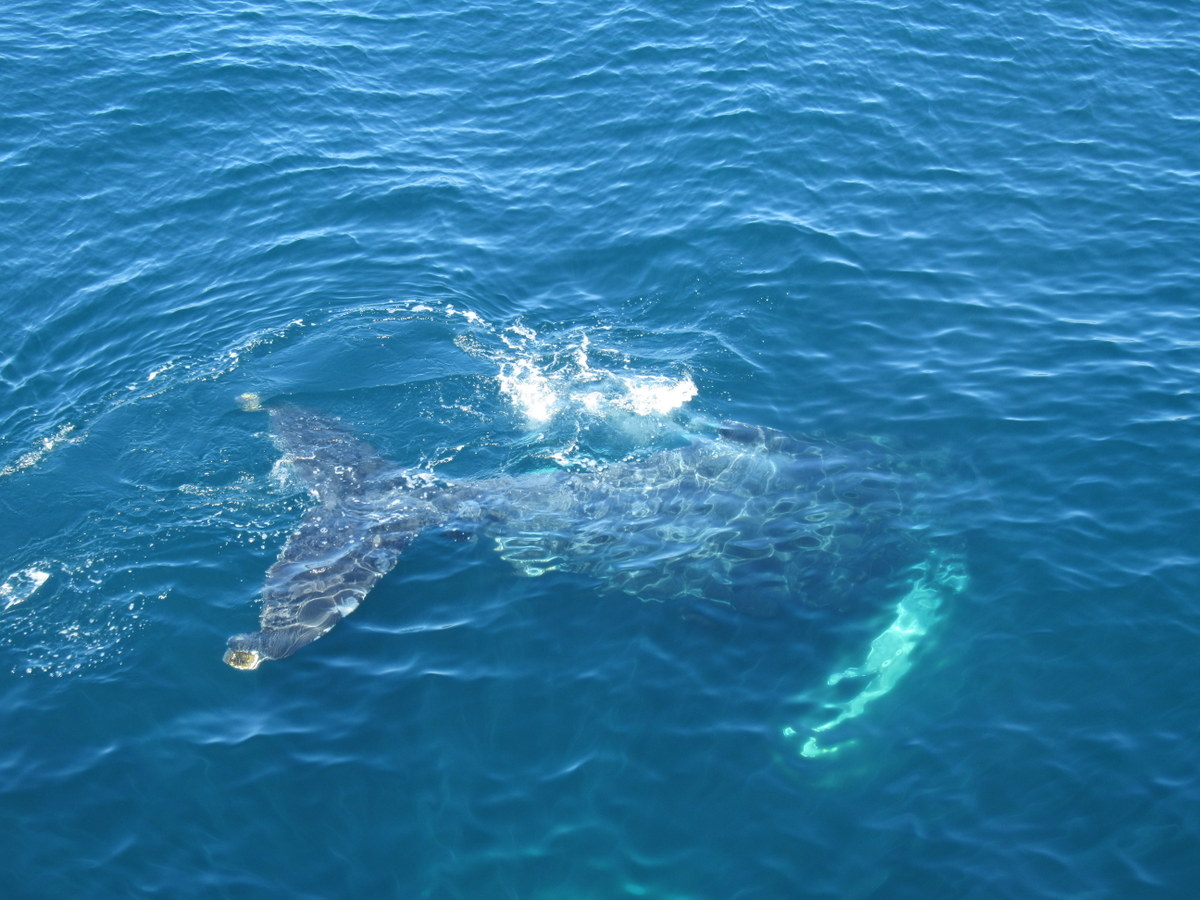
And then was one when the whale blew:
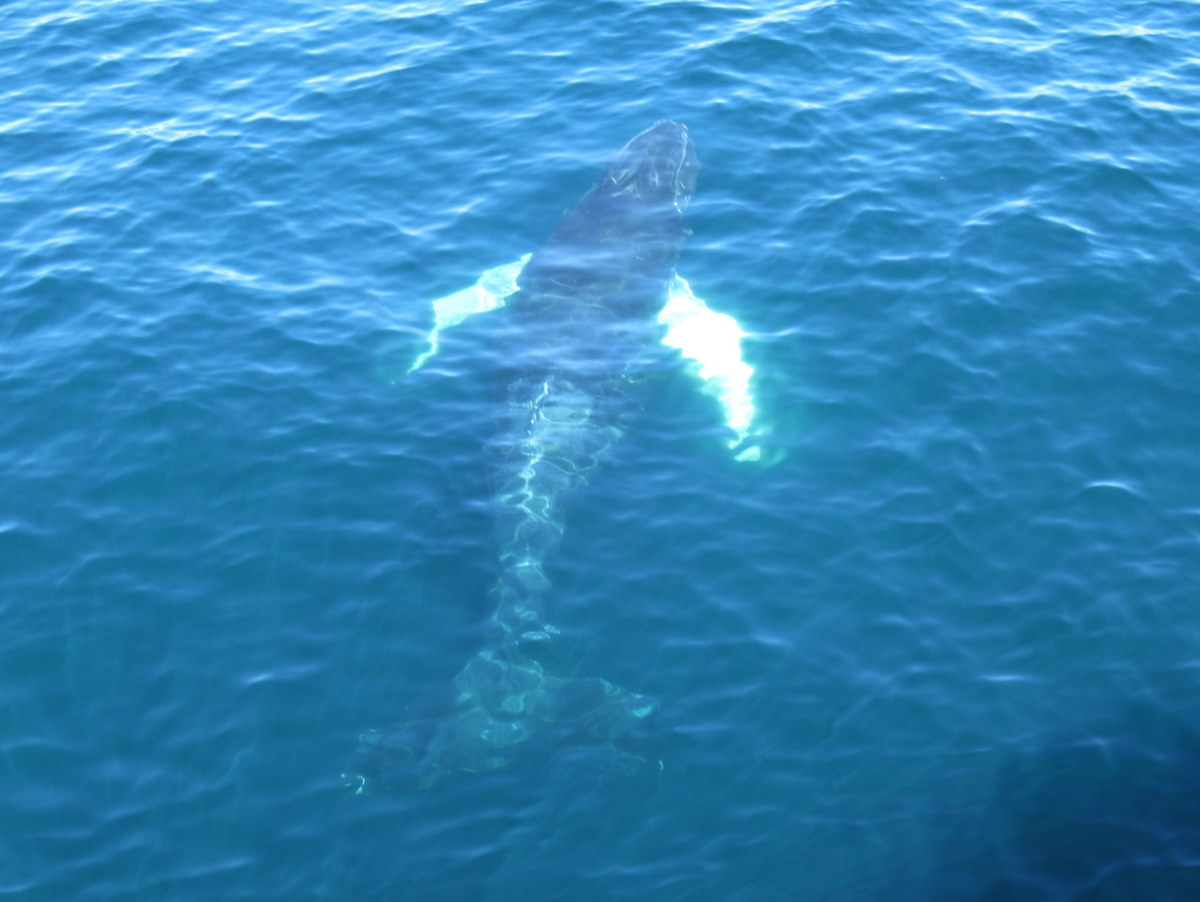
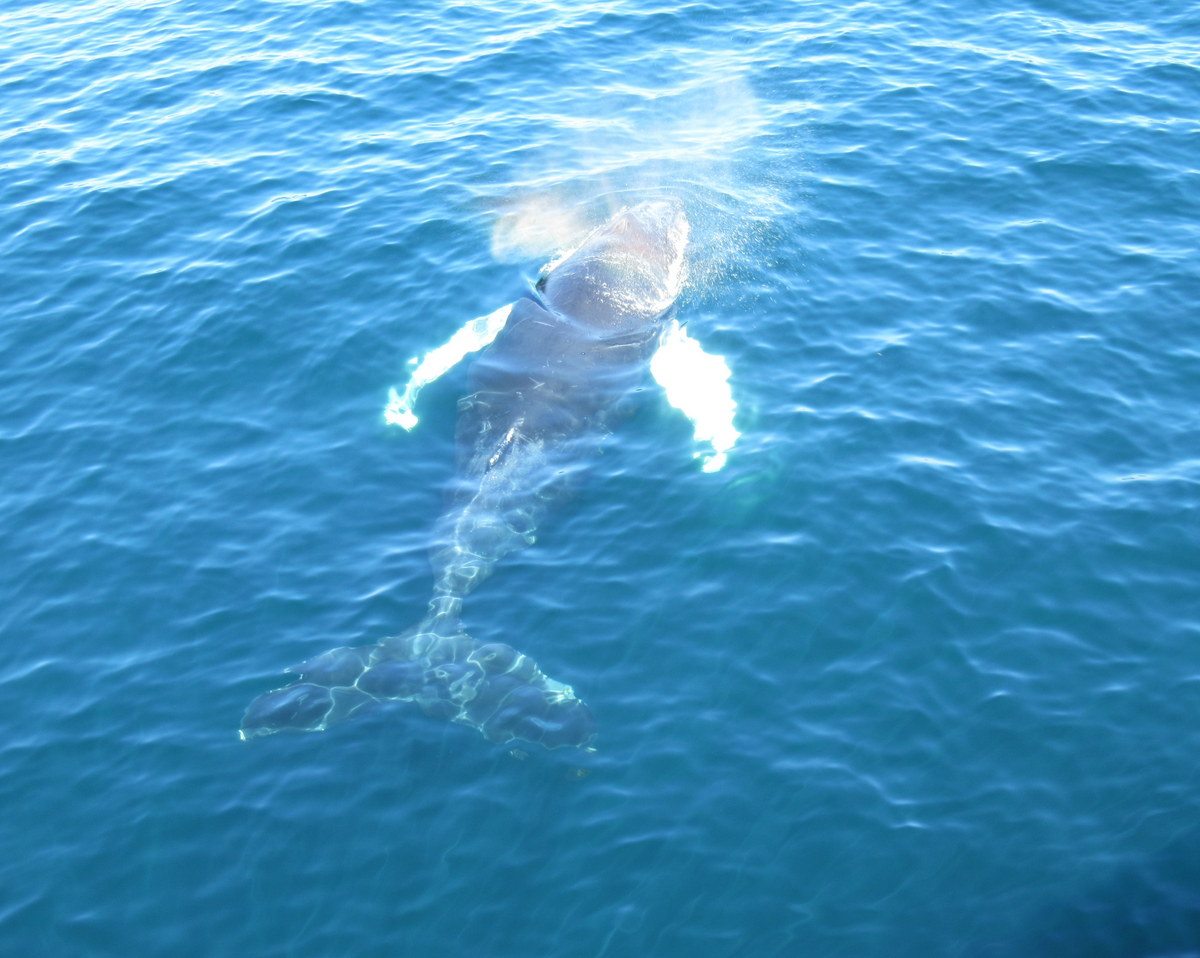
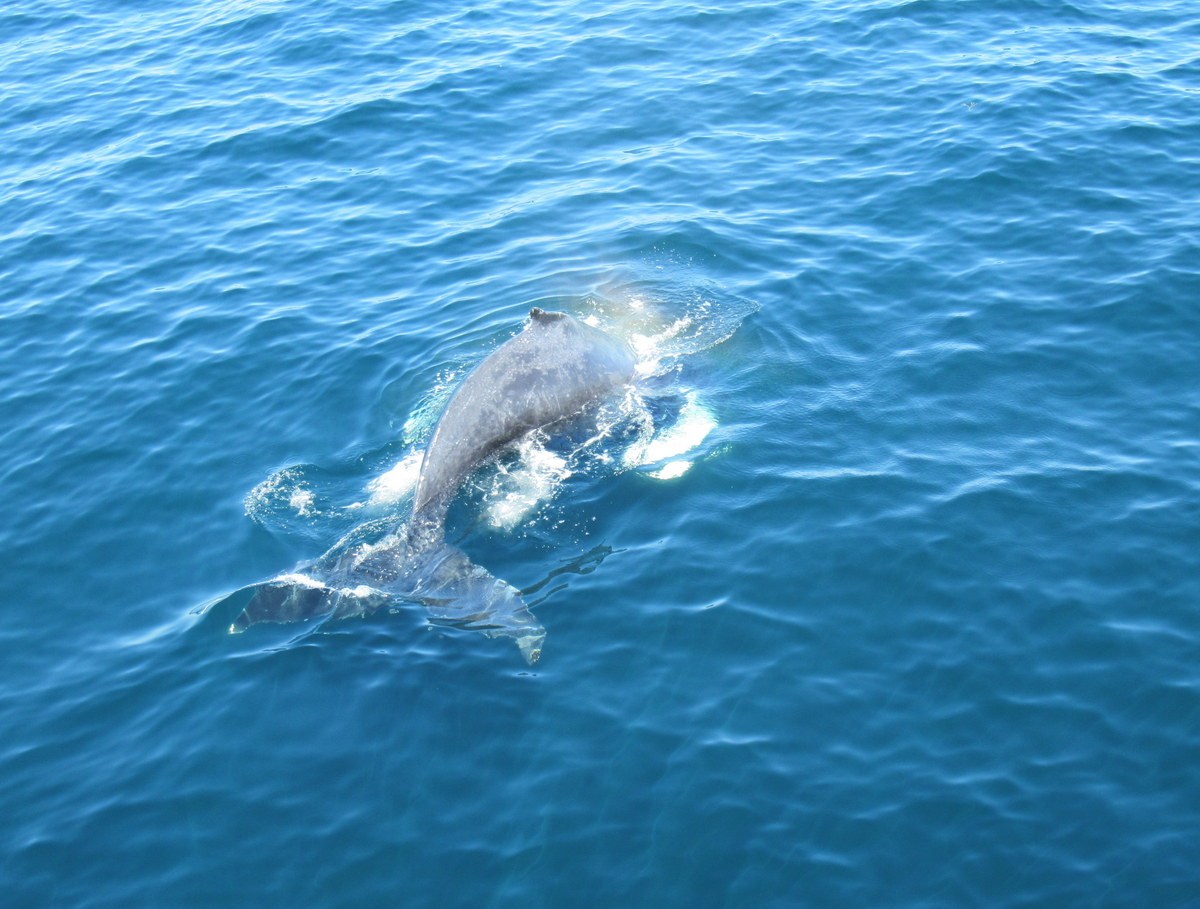
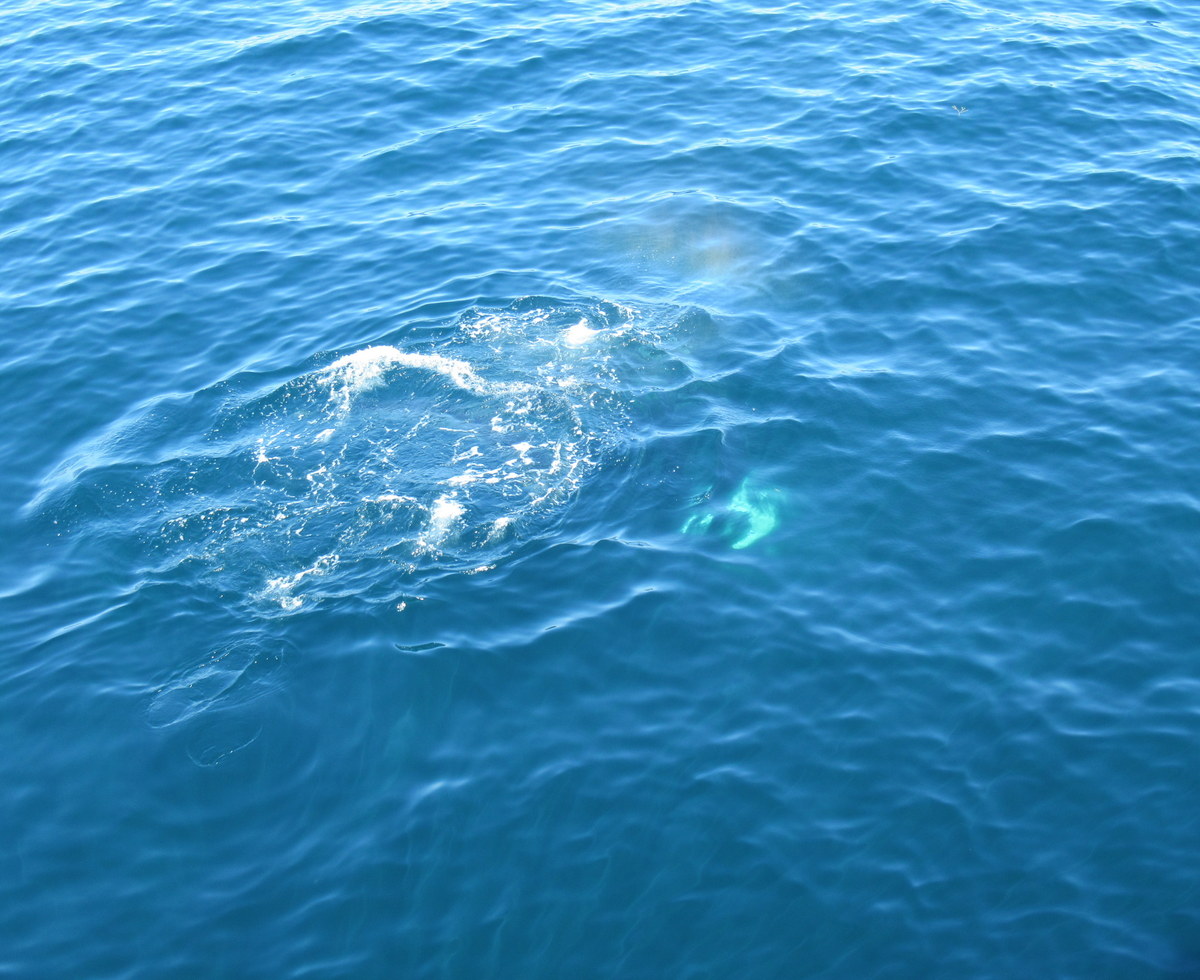
Here are a few other pictures I liked.
After re-submerging they sometimes left nice sections of smooth water:
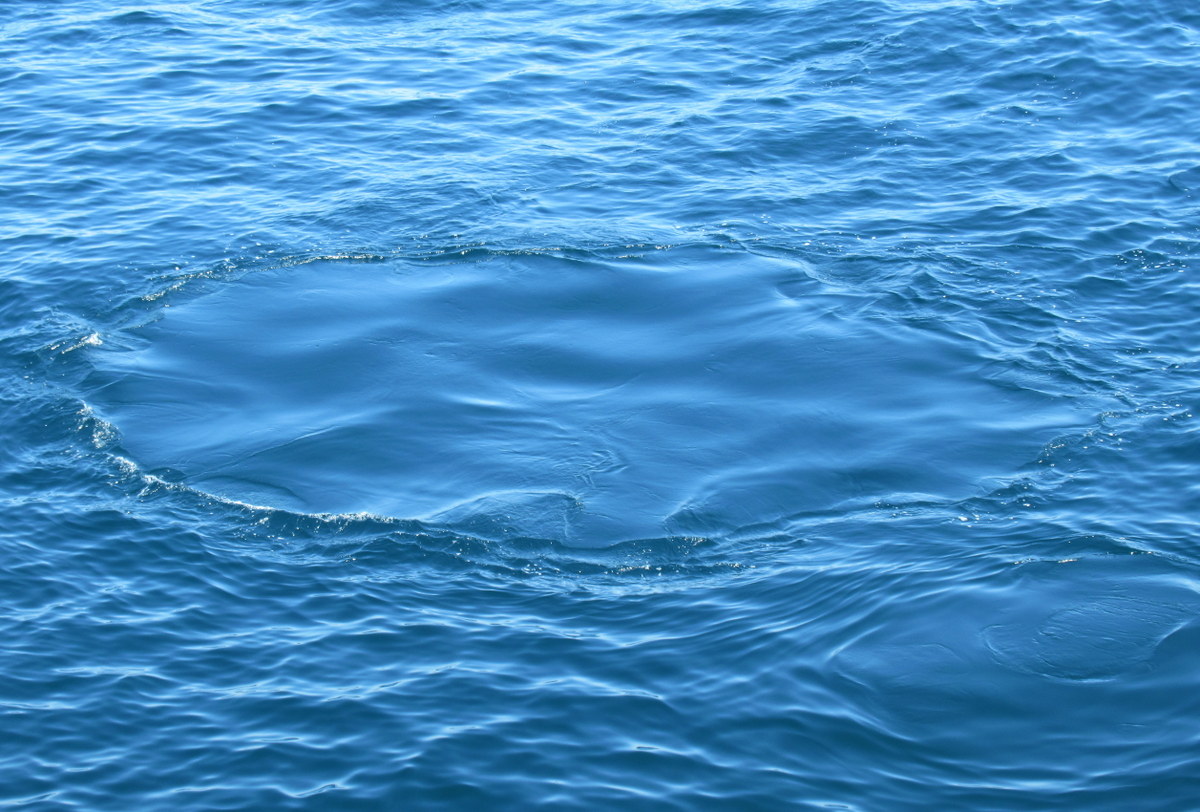
Most of my pictures didn’t get the eyes, but here’s one with an eye open:
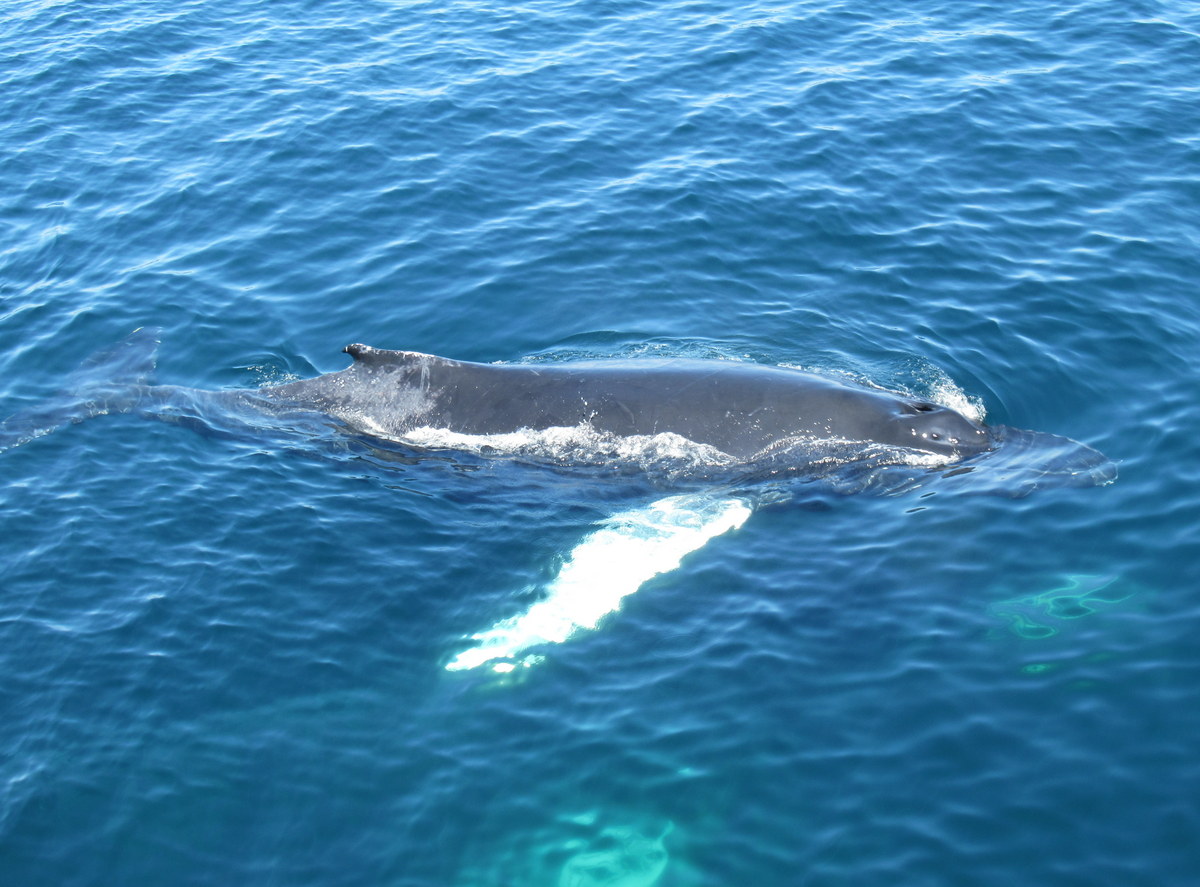
Then there was the photo with a little extra in the corner:
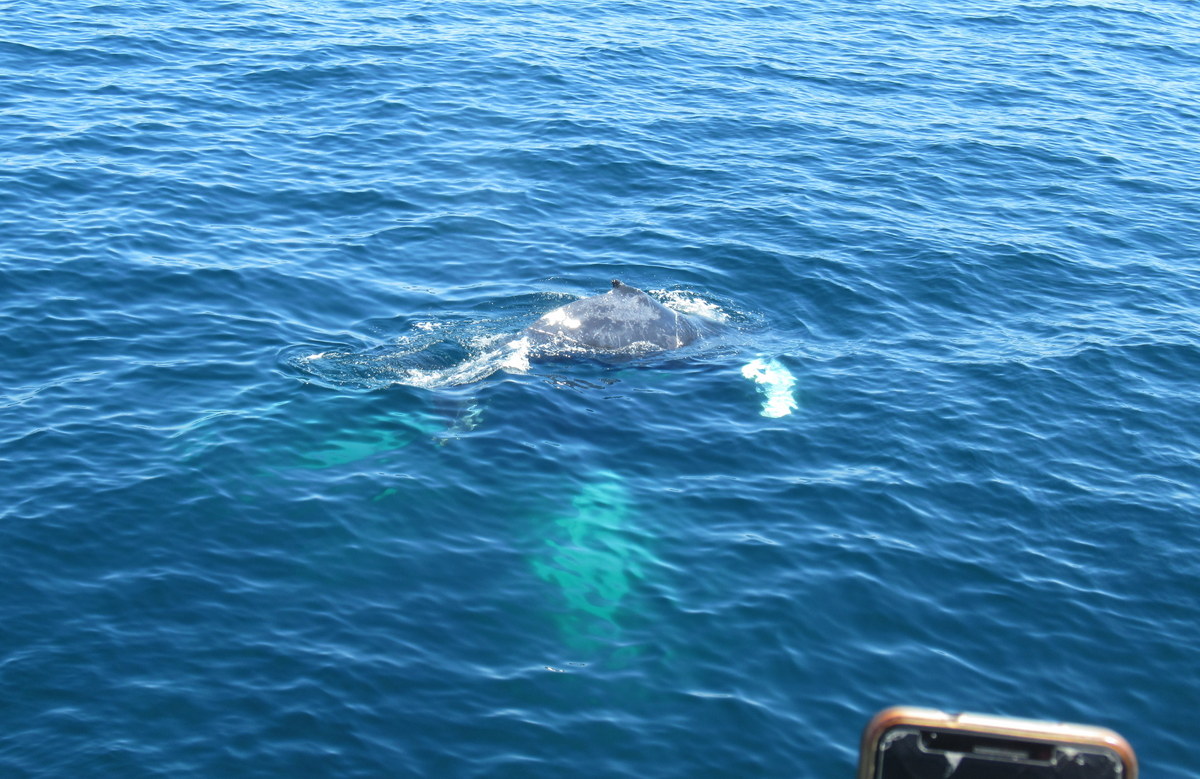
I’m used both to dealing with crowds and using optical zoom, which meant I could mostly stick to pictures of water and whales. But I had to laugh at a few photos like that. After all, did an event really happen if you don’t have photo evidence?
A final farewell
Just as the crew were talking about us really needing to get back to Boston, the pair left us with a final farewell:
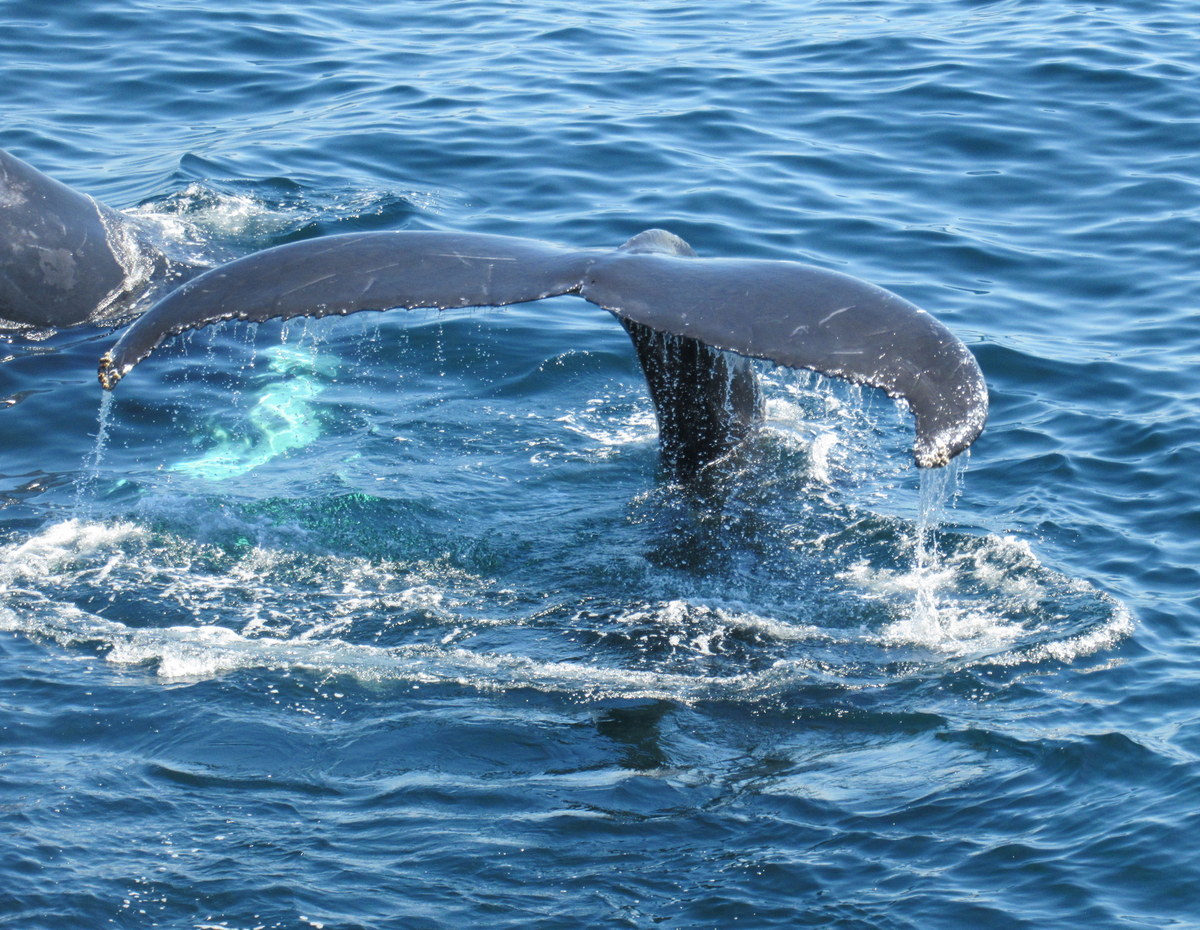
I realised just as I took it that I’d gone a little too soon for the proper picture of a white tail pointing straight up, but at least I got to see the full tail up close. Yes, I was annoyed with myself for missing the perfect shot, but it’s hard to be too annoyed while having a great experience.
(actually, having seen the official photo with white tail taken by one of the naturalists - I think I prefer my photo after all…)
So what does this mugging amount to?
It took three things to make a mugging:
- A curious calf.
- A watchful mother.
- Humans caring enough about whales to want to watch them and to try and avoid hurting them.
That’s all it needed. No stress, no tension, just excitement and joy. Maybe a few missed photos, but that’s OK. If you’re going to get mugged on the other side of the world, this is definitely the way to do it.
The trip’s not over till it’s over
So, we were headed back, and not expecting to see any more whales. But the naturalist said “I always say ‘The trip’s not over till it’s over’”.
Personally, I know animal encounters are unpredictable, but I thought it was just words. I expected the reverse of the trip out: harbour islands, aeroplanes landing, and the city skyline growing as we approached. That did happen, and it was good.
But we also ended up passing through a super-pod of North Atlantic white-sided dolphins. Perhaps several hundred of them, meaning leaping dolphins to either side of the boat almost as far as the eye could see.
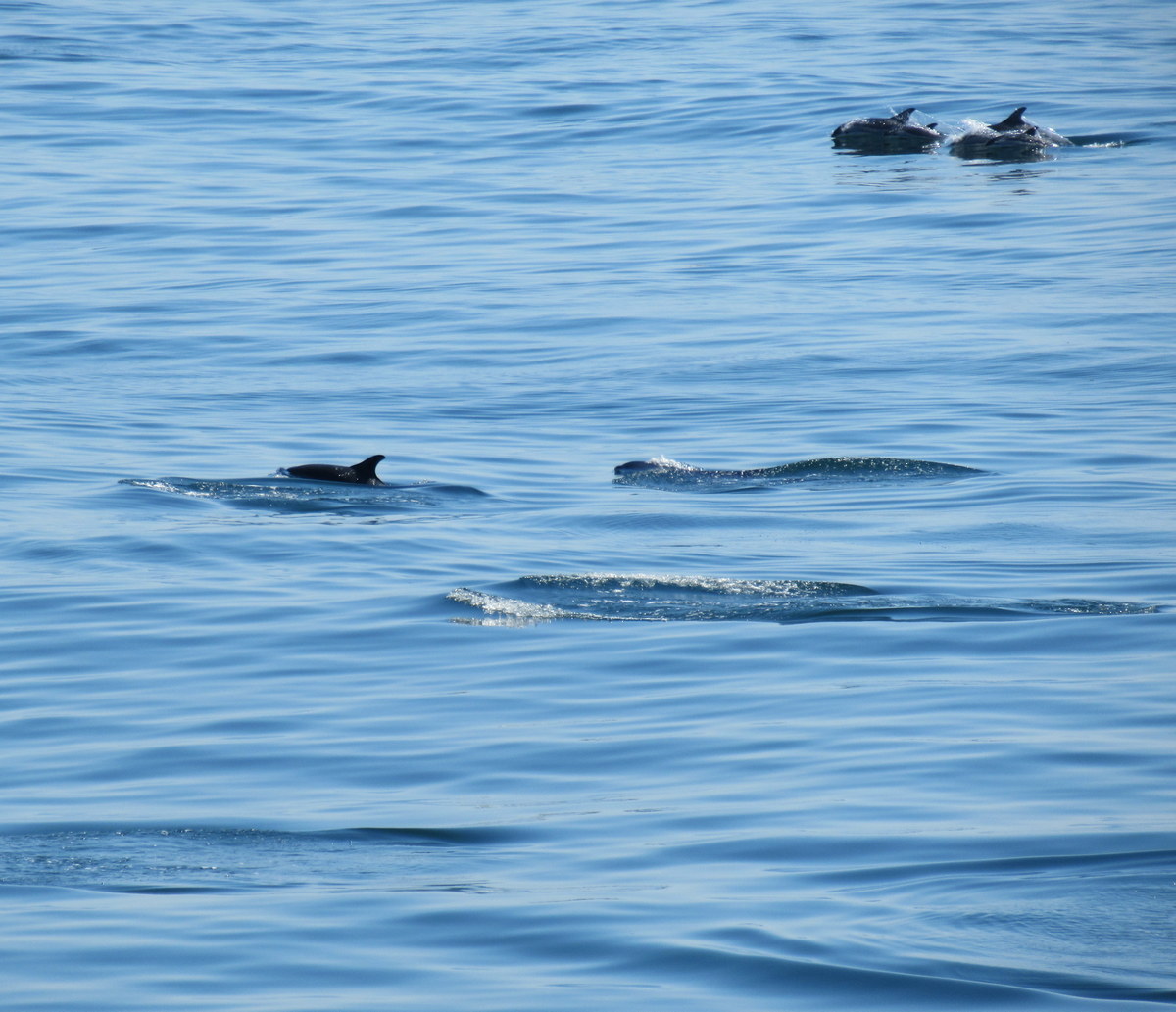
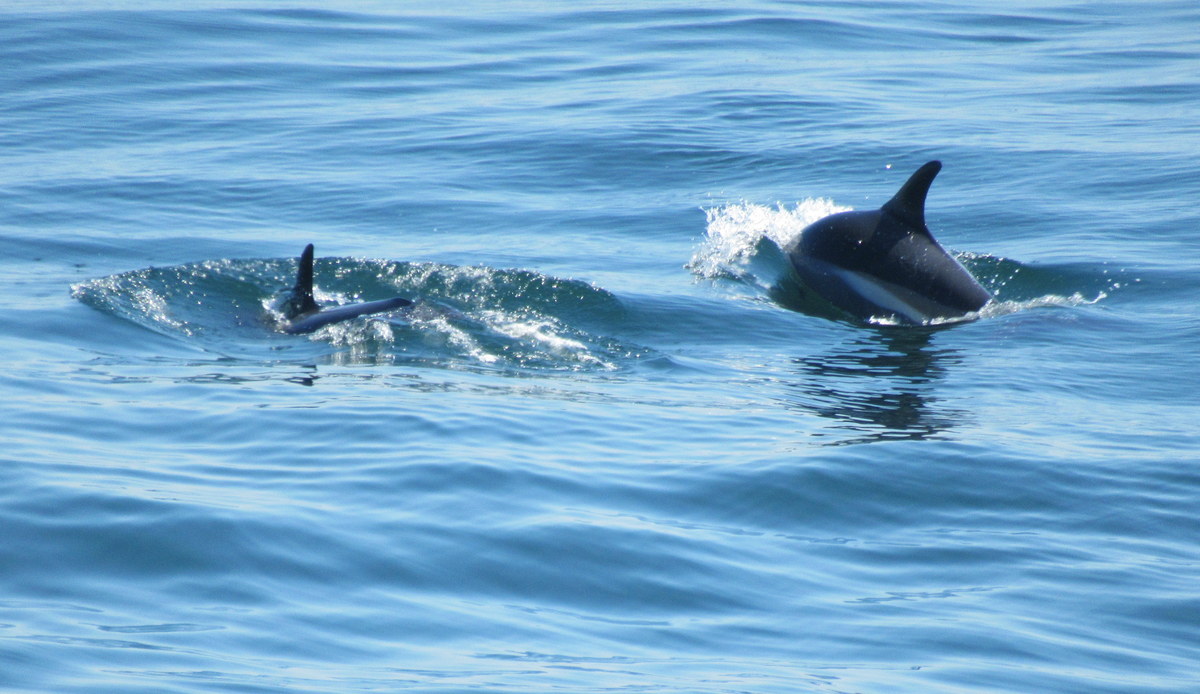
It just made an already great cruise even better.
Passing the airport
I mentioned aeroplanes: Boston Airport is a busy airport, and we went right past it. That meant plenty of opportunities for photos.
I watched this one all the way on to the tarmac:
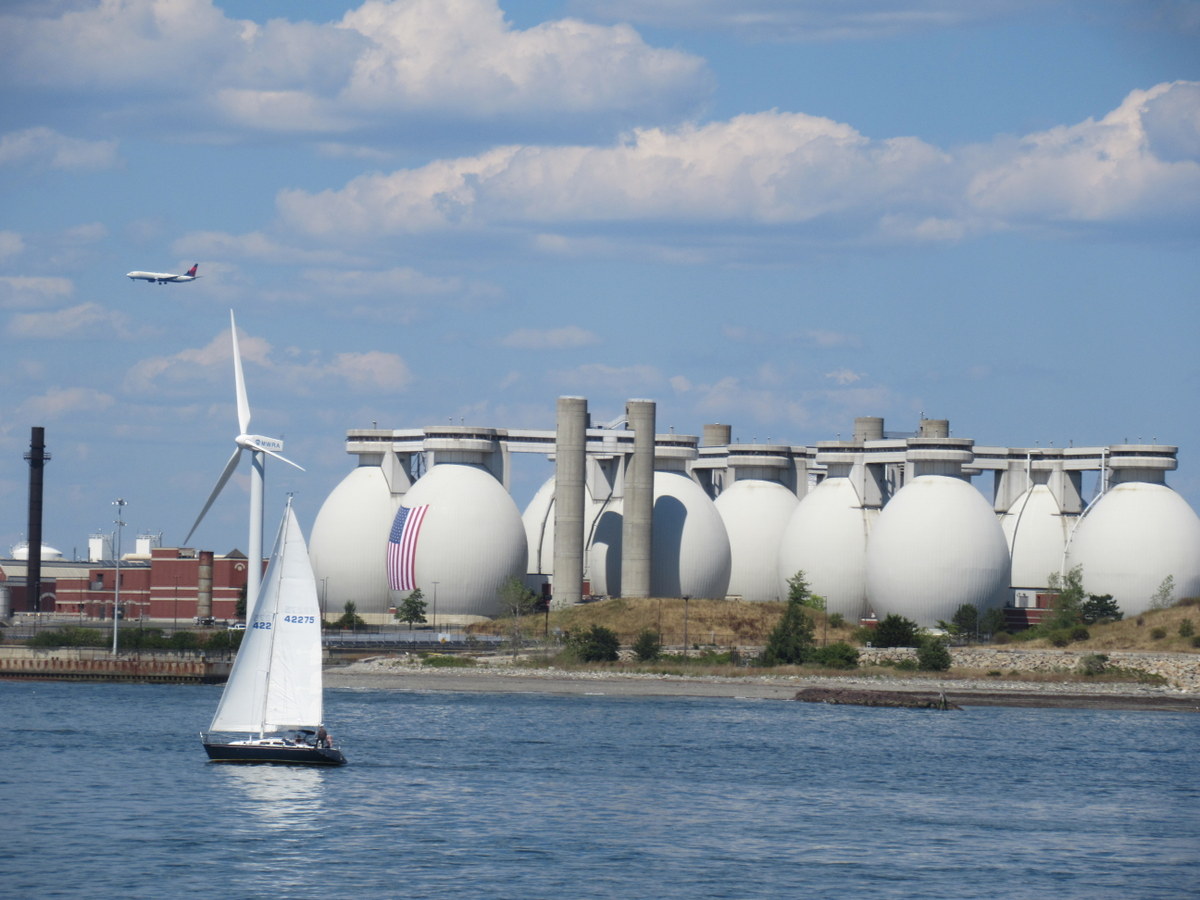
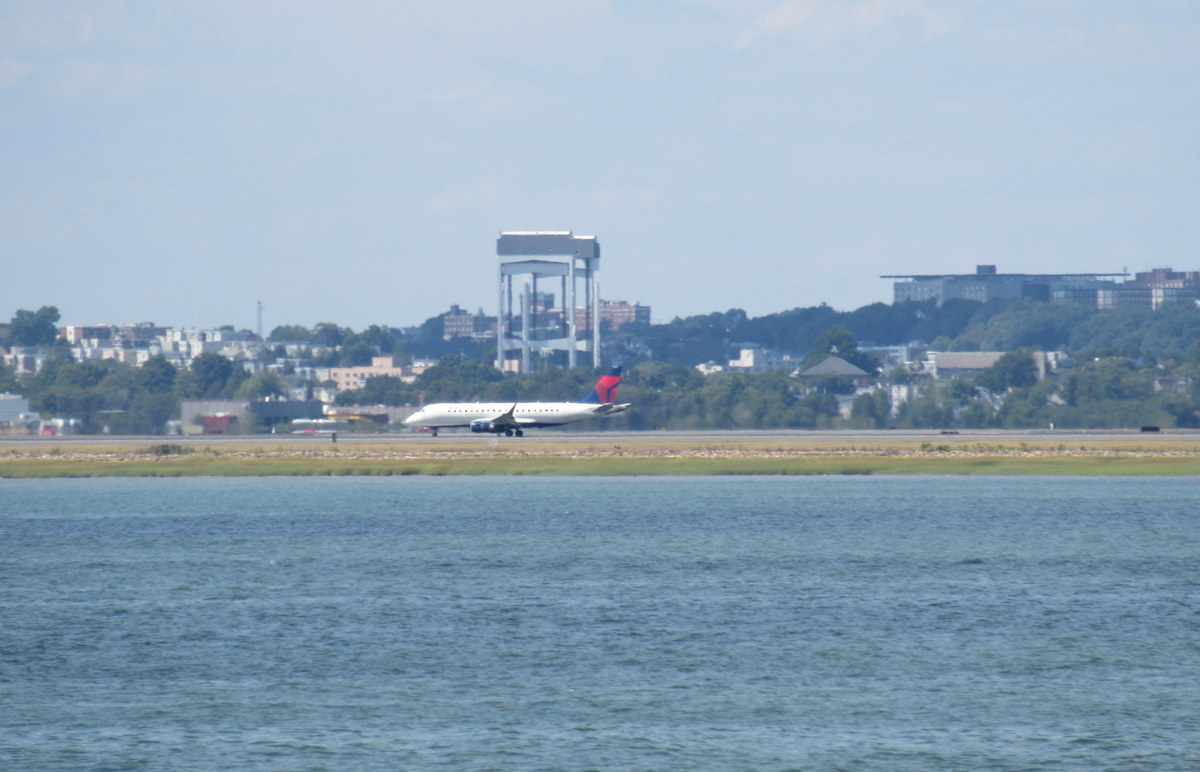
And then there was this one, coming straight at us (OK, not really…):
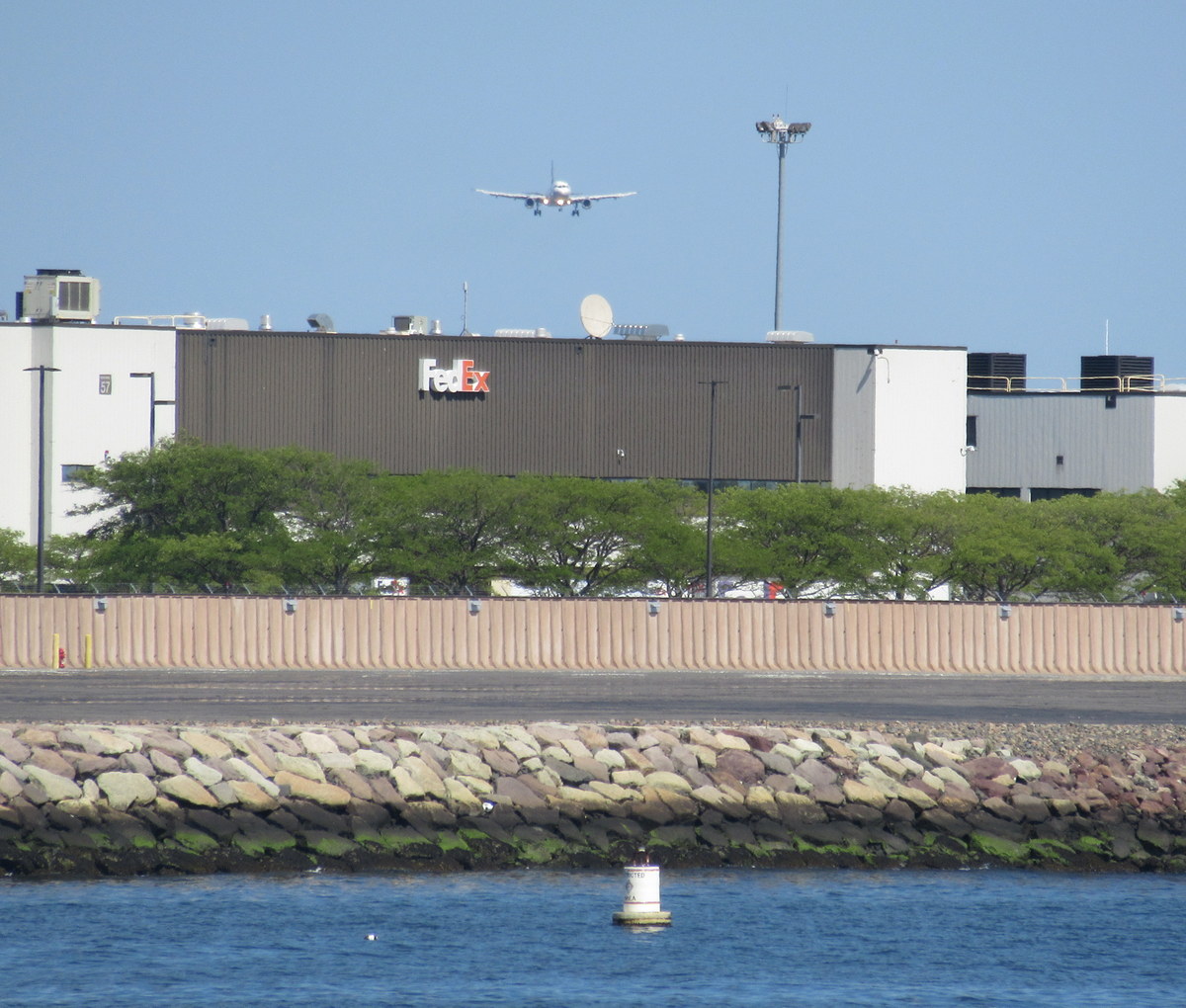
The Aquarium
The cruise started from the New England Aquarium, and had naturalists from there on board to tell us what was what.
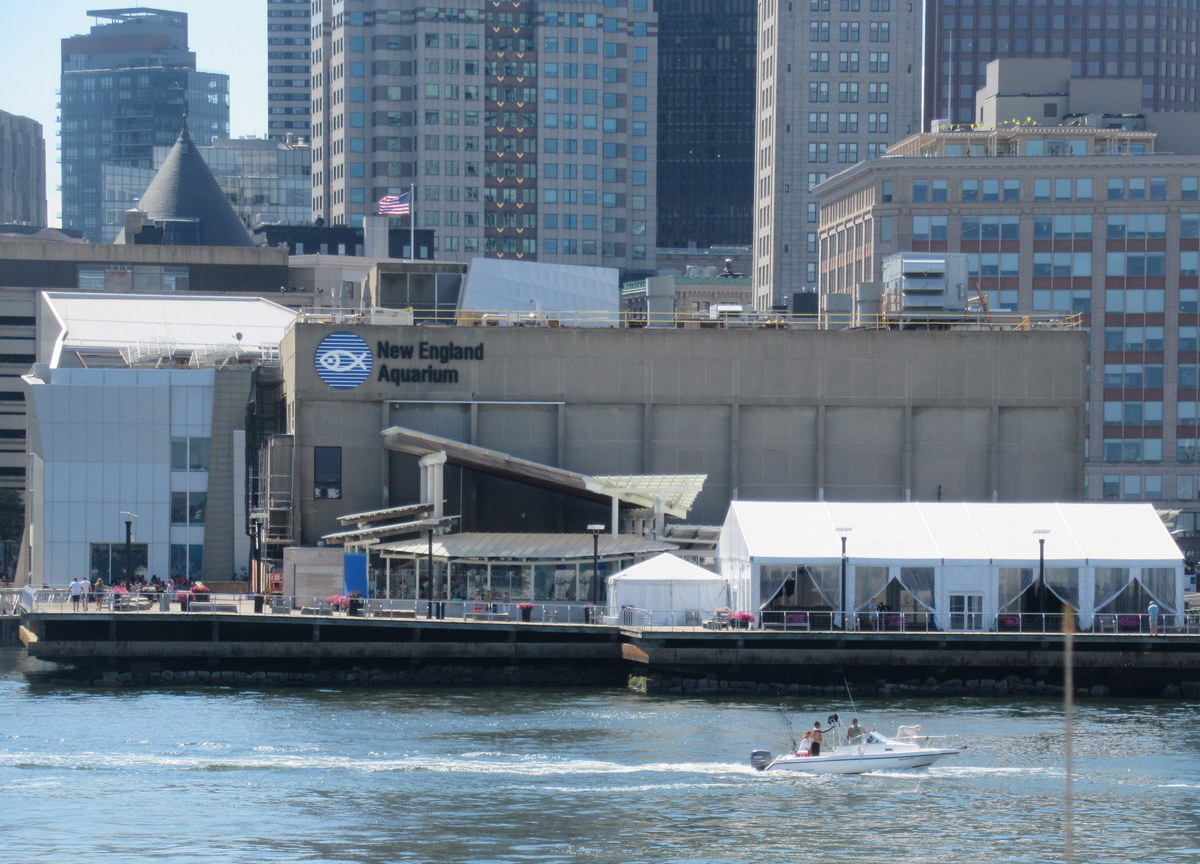
I had other places to be that afternoon, so I wasn’t able to go in and explore. But I did see a seal swimming there:
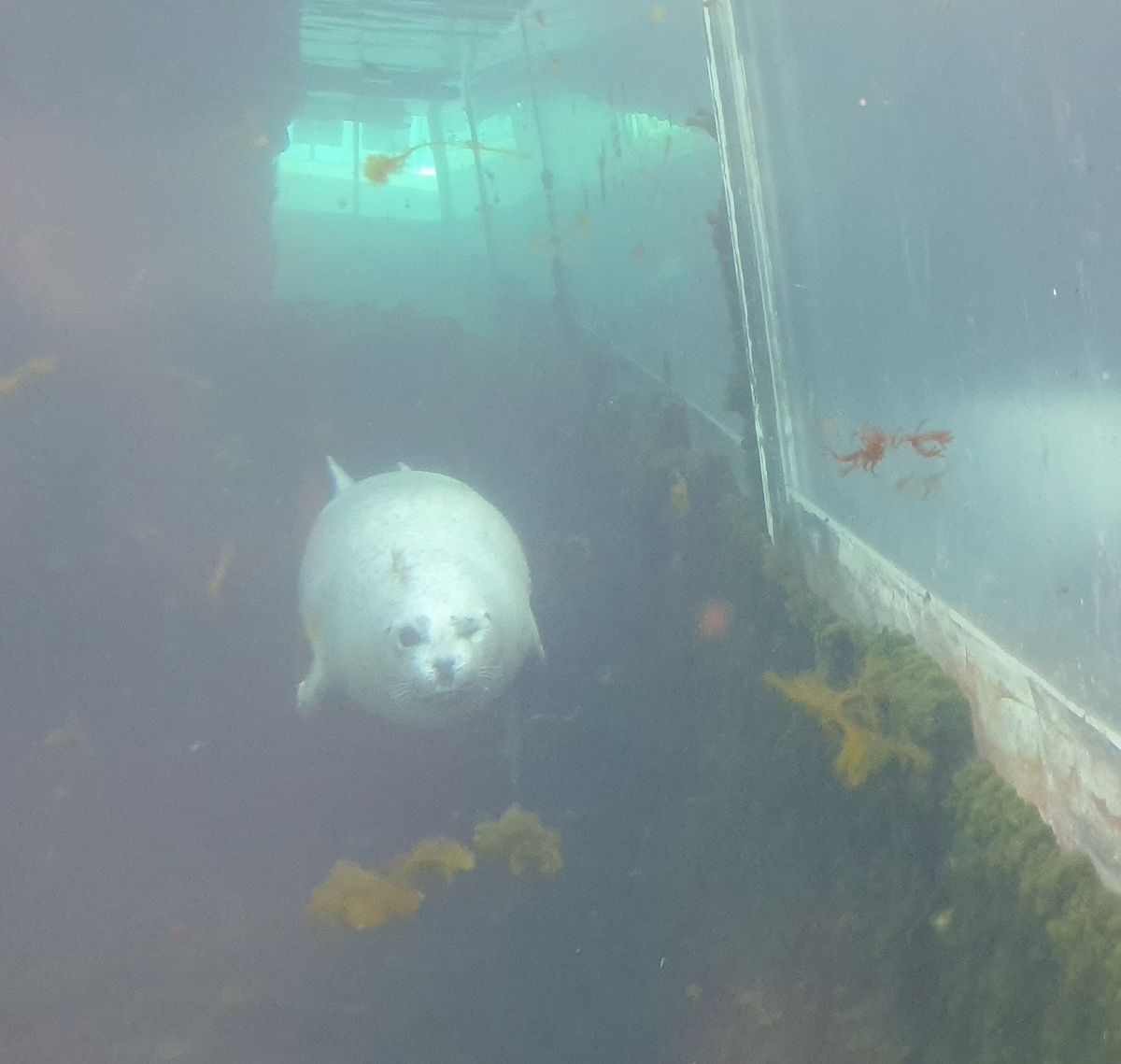
And the sculpture outside was fitting too:
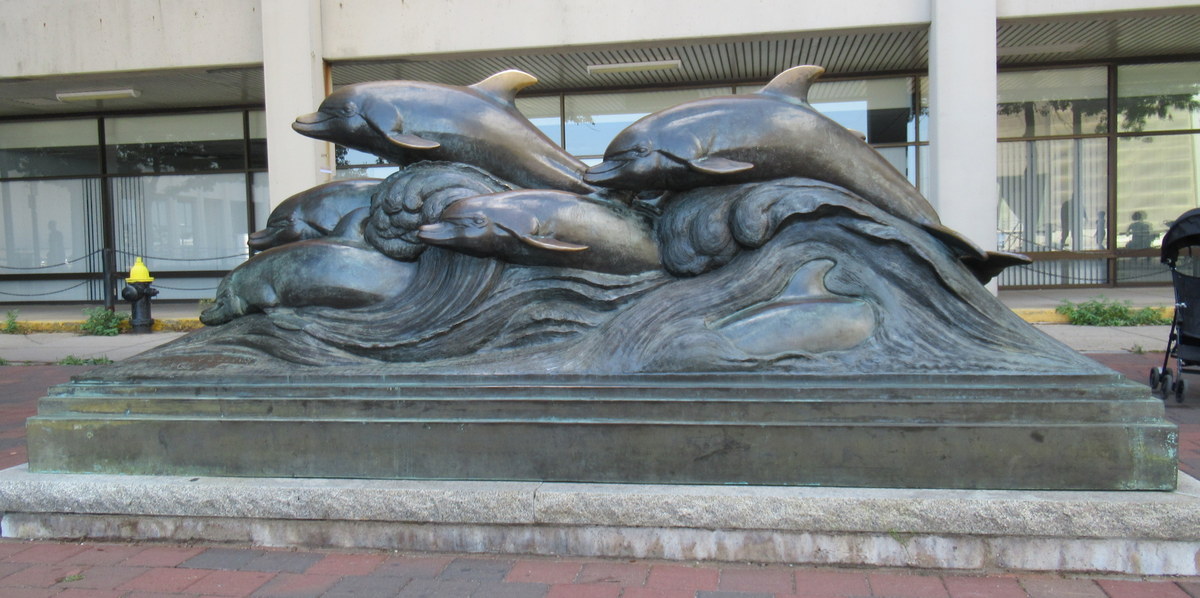
They also publish weekly blogs of what they’ve seen each cruise, with some photos. This one covered our cruise (look for 08-19-22 11am). It turns out the mother we saw is called Pleats, and it looks like Pleats and her calf were seen several times in the following days, and each time put on a good show.
Last Chance to See?
I’ve written before about Douglas Adams’ Last Chance to See (in collaboration with zoologist Mark Carwardine), then the follow-up TV series 20 years later with Stephen Fry and Mark Carwardine. Blue whales had been one of the species chosen (though they didn’t make it into the original book), and in the TV series the crew not only found blue whales but also went swimming with them.
To be fair, whale watching is the kind of activity that I could well have done anyway. But there was one particular quote from Mark Carwardine that got my interest:
At one point, filming stopped as the entire crew downed tools to pat, tickle and kiss the friendly whales around us. No one could resist.
Just a brief flirtation with a whale is often all it takes to turn normal, quiet, unflappable people into delirious, jabbering extroverts. On whale-watching trips almost everyone becomes the life and soul of the party. I have seen grown men and women dance around the deck, break into song, burst into tears, slap one another on the back and do all the things that normal, quiet, unflappable people are not supposed to do.
I have done them myself and laughed as I watched Stephen and the crew falling under the spell. I knew that their lives would never be quite the same again.
There is something about whales that grabs you by the scruff of the neck and makes you think about them morning, noon and night. At the risk of sounding theatrical, emotional and (heaven forbid) unscientific, they make you feel good.
After a really close encounter, it is hard to remain emotionally stable for several weeks afterwards. Eventually, the jabbering and the delirium subside, but you are still left with a good feeling that never really wanes. There is an immense and lasting satisfaction in simply knowing that the whales are out there, wild and free.
…
Ask someone else who has seen a whale and they will explain that I’m not quite as barmy and irrational as you might think. There are plenty of ‘whale junkies’ out there - people, like me, who have to see a whale at frequent intervals just to survive their normal daily lives.
Personally, I didn’t dance round the deck, break into song, or burst into tears. I’m not sure anyone else did, either. Instead, I had a great time, and I took a lot of photos (what a surprise!).
So what do I remember? (as opposed to looking at photos of).
I remember the crowding around the rails. The choruses of “Wow!” when a whale surfaced. The excitement. The click-click-click of serious cameras being deployed (as it happens, this was one of the experiences that led me to experiment with continuous capture on my camera, though it could well be months since I last used it).
So what’s special about whales?
The most obvious thing is of course that they’re big. Really big. Perhaps the humpbacks we saw weren’t as big as blue whales, but even the young, playful calf was a lot bigger and heavier than we are. I’d never before seen an animal that big, let alone up that close.
But I think it’s also important to remember that they’re relatives. OK, to be fair, all life on Earth are our relatives, but whales are mammals. They may not be very close relatives, but they’re much more closely related to us than fish or sharks or turtles or octopi or other well-known denizens of the great deeps. Just as one distinguishing mammal trait, their calves feed on milk, just like our young do.
They’re among the few species that went back to the ocean after becoming fully land-based. Not just part of the time, like, say, seals - but all the time (and it’s also rather important that they do actually come up to the surface - we wouldn’t see much if they were staying 100m below the surface…)
They’re intelligent. They’re curious. And they seem to want to see us like we want to see them.
In short, they live in a very different world from us and are very different from us - and yet we can feel a connection with them.
Would you recommend the cruise?
Definitely - and not just for someone who’s never been, either. Like all wild animal experiences, I’m sure that each time is different. If I were back in Boston - and I’d love to be back in Boston - I’d strongly consider doing this again (I’d also want to explore the Harbor Islands a bit more - another thing that I hadn’t seen on lists before visiting).
To practicalities: Yes, the whales are wild animals. You can’t know what you’re going to see. But the cruise did come with a guarantee that if you didn’t see whales you could go on another cruise free.
It wasn’t likely that I would use that guarantee - I was only in Boston for a few days, so wouldn’t necessarily have had the time to spend another four hours on a cruise if the first one hadn’t produce any whales. But the reason they can offer that guarantee is that they do expect to see whales every trip. For comparison, the closest whale-watching to me doesn’t have that guarantee, though it’s supposed to have an 80% success rate during whale season.
What next?
A month later I saw dolphins in Hawaii while on a snorkeling cruise. Not swimming with whales, perhaps, but definitely admiring their cousins the dolphins and swimming with turtles and tropical fish. Then in December I was on another cruise, seeing hundreds of seals off Phillip Island at the aptly named Seal Rock.
Down near Phillip Island is also the closest whale-watching cruise to me. I’d thought about going on a cruise this year, but when it came to the whale season it just didn’t work out. Perhaps next year.
Whales are special, and I want them to stick round. As Mark Carwardine said in the afterword to Douglas Adams’ masterpiece:
There is one last reason for caring, and I believe no other reason is necessary. It is certainly the reason why so many people have devoted their lives to protecting the likes of rhinos, parakeets, kakapos and dolphins. And it is simply this: the world would be a poorer, darker, lonelier place without them.
If the whales are gone, they’re gone. Other animals might eventually evolve and adapt to occupy their niche, but they’ll be different animals. They won’t act the same as whales. They won’t be whales. Perhaps they won’t even be mammals.
As Carwardine says, there’s a satisfaction simply knowing the whales are out there, wild and free. I want them to be able to live their own lives in their very different environment. Curious about us, sure, but not too bothered about us, and certainly not endangered by us.
And yes, I hope that sometime my path in life crosses theirs again - but to me it’s more important that there are whales living free than that I personally encounter them.